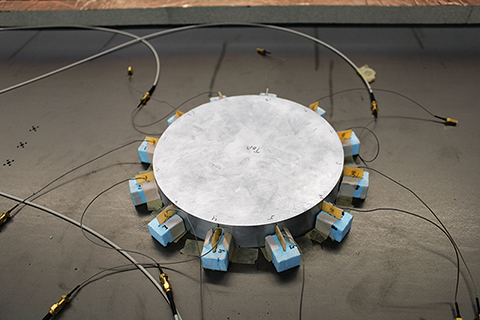Invisibility is no longer the stuff of science fiction: two U of T researchers have demonstrated an effective invisibility cloak that can make objects disappear from radar.
Engineering professor George Eleftheriades and PhD student Michael Selvanayagam designed and tested a new approach to cloaking: surrounding an object with small antennas that collectively radiate an electromagnetic field. The field cancels out any radio waves scattering off the now cloaked object.
“We’ve taken an electrical engineering approach,” says Eleftheriades. “It’s very practical.”
Picture a mailbox. When light hits the mailbox and bounces back into your eyes, you see the mailbox. When radio waves hit the mailbox and bounce back to your radar detector, you detect the mailbox. Eleftheriades and Selvanayagam’s system wraps the mailbox in a layer of tiny loop antennas that radiate a field away from the box, cancelling out any radio waves that would bounce back.
The system can be scaled up to cloak larger objects using more than one layer of antenna loops, and Eleftheriades says the loops could be made flat, like a blanket or skin.
Applications of the cloaking technology could extend beyond such obvious ideas as hiding military vehicles or conducting surveillance operations. For example, big structures that interrupt cellphone signals could be cloaked to allow signals to pass by freely.
Recent Posts
For Greener Buildings, We Need to Rethink How We Construct Them
To meet its pledge to be carbon neutral by 2050, Canada needs to cut emissions from the construction industry. Architecture prof Kelly Doran has ideas
U of T’s 197th Birthday Quiz
Test your knowledge of all things U of T in honour of the university’s 197th anniversary on March 15!
Are Cold Plunges Good for You?
Research suggests they are, in three ways




